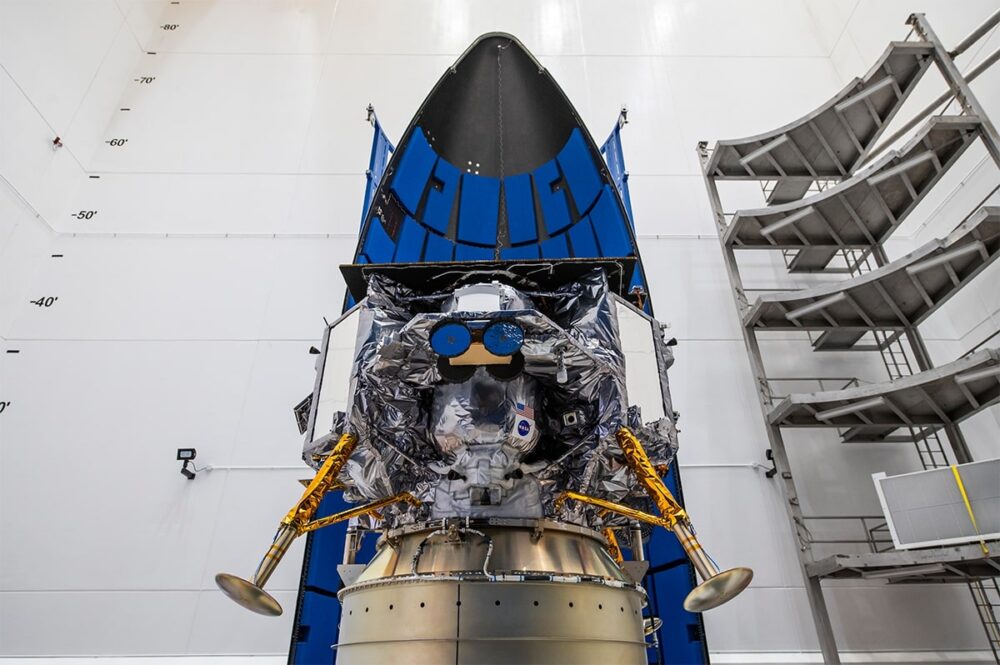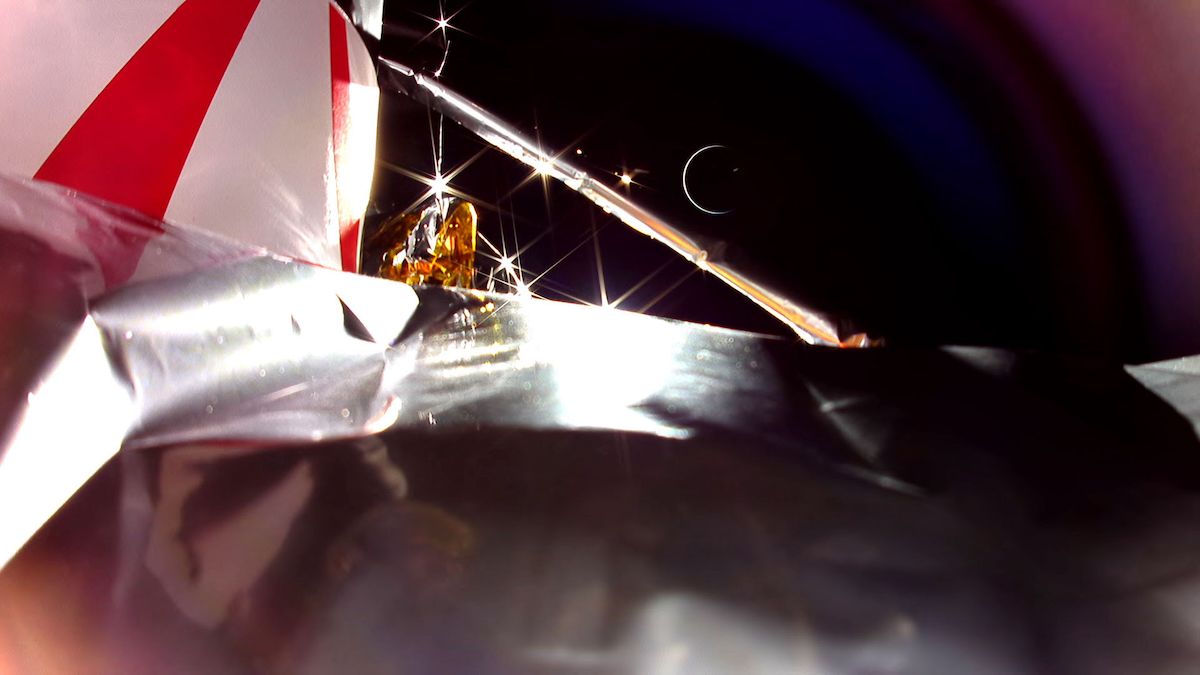Though the mission didn’t reach its ultimate objective, both the North Side-based company’s leaders and Pittsburgh tech boosters won’t call it a failure. Instead, they say: Look how far we got.
Though the mission did not meet its ultimate goals, stakeholders see the mission as a mark of success for the local tech industry, and American space exploration as a whole.
Peregrine Mission One was years in the making and the result of a collaboration between Astrobotic, Carnegie Mellon University students, the United Launch Alliance and NASA. The team’s efforts to gather payload data were fruitful and several mission objectives were met, Astrobotic officials reported during a media teleconference held Friday afternoon.

Astrobotic CEO John Thornton. (Courtesy Astrobotic)
Astrobotic CEO John Thornton remained upbeat throughout the call, describing the mission as “a wild adventure.”
“Certainly not the outcome we were hoping for … but man, got really exciting through the course of it,” he said before recounting the Peregrine’s promising start and technical challenges.
The team considers it a win that many of its payload customers achieved their goals. The German Aerospace Center’s radiation detector that was on board, for instance, still collected 92 hours of data while in space, per Thornton.
Astrobotic will assemble a review board to officially determine the cause of the spacecraft failure, especially so it can avoid such anomalies when its Griffin lander launches this November.
“I am more confident than ever that our next mission will be successful” and land on the moon, thanks to the team’s resilience, Thornton said.
Astrobotic received a $108 million contract from NASA to complete the mission, part of the agency’s Commercial Lunar Payload Services program. Answering a media question about whether that full amount would be paid, given the mission’s failure, the CEO said 10% of the contract’s funding was subject to certain success criteria, and a review process would follow to determine whether that funding would be withheld.
Pittsburgh has a history of space tech innovation

Peregrine lunar lander integrated with the ULA Vulcan. (Courtesy Astrobotic)
The space tech industry has had a presence in the city for decades.
In the 1950s and ‘60s, the Steel City played a crucial role in the 1969 Apollo 11 mission. At the time, Pittsburgh companies’ contribution came in the form of metals. Alcoa produced and supplied over a million pounds of aluminum alloy needed for the Saturn V rocket series. (Saturn V is the launch vehicle developed by NASA under the Apollo program.) PPG, the paint manufacturing company, would later provide 340 gallons of specialized paint to restore the Saturn V during the Apollo 11 50th anniversary project in 2019. And Westinghouse secured the contract to create the camera that filmed the moon landing.
“The United States could not have landed on the moon without Pittsburgh,” former Moonshot Museum Executive Director Sam Moore told Technical.ly in December 2022. “Without companies like Westinghouse and PPG and Alcoa and the tradition of innovation and the impact of [the] industry here in western Pennsylvania, the moon landing 50 years ago couldn’t have happened.”
At the time of its middle-of-the-night launch on Jan. 8, the Peregrine Lunar Lander was onboard the ULA Vulcan Rocket, alongside the CMU student-built Iris rover. The four-pound Iris rover intended to make history by becoming the first American-developed rover, the first lunar rover not produced by a national agency, and the first student-made rover to land on the moon.
Leading up to the launch, Thornton spoke about the difficult challenge ahead.
“If you’ve been following the lunar industry, you understand landing on the Moon’s surface is incredibly difficult. With that said, our team has continuously surpassed expectations and demonstrated incredible ingenuity during flight reviews, spacecraft testing, and major hardware integrations,” Thornton said in an announcement in December 2023. “We are ready for launch, and for landing.”
Indeed, the road to the launch wasn’t always an easy one. A May 4 launch was initially planned, and later a Christmas Eve date, until it was postponed due to issues during testing. Finally, after a successful launch, a propellant leak on Jan. 9 led to the company’s report that a soft landing on the moon was unlikely.
On Thursday, Jan. 18, Astrobotic reported that the Peregrine has burned up in Earth’s atmosphere.
(1/2) Update #22 for Peregrine Mission One pic.twitter.com/YIKQKE6fgH
— Astrobotic (@astrobotic) January 19, 2024
Iris, too:
Coming in hot! #NOTAM pic.twitter.com/tLUctYptGa
— Iris Lunar RoverSat (Carnegie Mellon University) (@cmu_iris) January 18, 2024
What comes next for Astrobotic and space exploration
The launch attracted copious “public rallying,” as Joel Kearns, deputy associate administrator for exploration in NASA’s Science Mission Directorate, noted during the Friday call. That includes members of the Pittsburgh tech community.
After all of the Peregrine mission’s trial and error, Pittsburgh Technology Council VP Jonathan Kersting said, local tech stakeholders “couldn’t be prouder” of what Astrobotic has accomplished.
“Three words for you: Space. Is. Hard,” Kersting told Technical.ly via email. “Astrobotic proves that you can build a world-class team and dare to take on the hardest technical and engineering challenges around. There will always be setbacks when taking on this kind of game-changing work and we know that Astrobotic will continue to forge ahead and build from the Peregrine mission. Through Astrobotic, our region is now on pace to become a leading center in space exploration technology.”
Keystone Space Collaborative Program Director Zoë Karabinus agreed that considering how difficult space exploration is, Astrobotic has done impressive work. She anticipates that hiccups aside, the country will continue trying to make a mark in galaxies far away.
“Their passion to push for new frontiers is admirable and the successful, historic launch deserves celebration from all Pennsylvanians, Ohians, West Virginians and beyond,” Karabibnuis said. “Astrobotic remains one of our core partners and anchors to the region, and we stand unwaveringly with them. We don’t give up easily, and Astrobotic is no exception.
“If getting to the Moon was easy, it would happen a lot more often,” she continued. “We anticipate that the things Astrobotic — and the entire space community — has learned through facing this adversity will undoubtedly position us better for the next opportunity and will propel this industry farther than we could imagine.”
Welcome home #Peregrine. Thank you for being such a scrappy lil’ lander and for all the Science! @astrobotic you guys rock! 😎🚀🔥🔥🔥 pic.twitter.com/IY5EjPL2f4
— Space By Storm (@SpaceByStorm) January 19, 2024
Before you go...
Please consider supporting Technical.ly to keep our independent journalism strong. Unlike most business-focused media outlets, we don’t have a paywall. Instead, we count on your personal and organizational support.
3 ways to support our work:- Contribute to the Journalism Fund. Charitable giving ensures our information remains free and accessible for residents to discover workforce programs and entrepreneurship pathways. This includes philanthropic grants and individual tax-deductible donations from readers like you.
- Use our Preferred Partners. Our directory of vetted providers offers high-quality recommendations for services our readers need, and each referral supports our journalism.
- Use our services. If you need entrepreneurs and tech leaders to buy your services, are seeking technologists to hire or want more professionals to know about your ecosystem, Technical.ly has the biggest and most engaged audience in the mid-Atlantic. We help companies tell their stories and answer big questions to meet and serve our community.
Join our growing Slack community
Join 5,000 tech professionals and entrepreneurs in our community Slack today!

The person charged in the UnitedHealthcare CEO shooting had a ton of tech connections

From rejection to innovation: How I built a tool to beat AI hiring algorithms at their own game

Where are the country’s most vibrant tech and startup communities?




